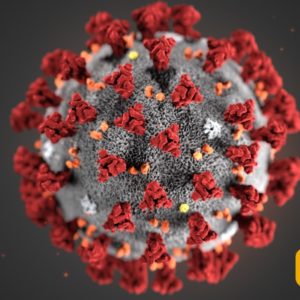It’s sometimes easy to forget our species is under constant attack.
Our access to safe food supplies guards us against dangerous bacteria, viruses and parasites. Modern plumbing and sewage systems have relegated several diseases to rare threats. Then there are vaccines. Once common diseases like hepatitis are relatively rare and polio has nearly vanished thanks to vaccinations many of us received in the first few weeks of life.
Human advancements have transformed countless serious health threats into historical anecdotes. But every so often, Mother Nature reminds us of our frailty.
The latest comes in the form of the coronavirus outbreak, which began in China late last year and has now surfaced in more than 20 countries. To date, tens of thousands of cases have been reported.
We have seen this before. Another coronavirus outbreak, SARS, infected thousands and killed 774 in the early 2000s. The disease caused worldwide alarm. It also severely damaged China’s economy for several years.
So how concerned should we be this time around? In many respects, we’re better prepared.
We learned a lot from SARS. In that instance, public health alerts were delayed by several months. That is not the case today. Scientists now have a more thorough understanding of coronaviruses.
In addition, key technologies, such as the ability to sequence virus genes, have greatly improved. In responding to this latest threat, scientists and research organizations are moving quickly. Millions have been raised to develop and test vaccines. Some have estimated that animal trials could begin within months.
One other reason we should take comfort is the existence of proven scientific method. We know that vaccines are highly effective and we know how to develop them. One recent example is Ebola. Studies in nonhuman primates allowed researchers to create a safe vaccine that some have estimated to be 100 percent effective.
In the case of SARS, a vaccine was developed, again through animal studies. But it was shelved after the outbreak ended thanks in great part to extensive public health measures.
A similar process is currently taking place to combat the latest coronavirus, so there is good reason to be somewhat optimistic. But even after this outbreak passes, it is hoped with limited casualties, we must not quickly forget a few things. First, the fight against deadly diseases is never over.
New viruses and strains will continue to surface so we must not let our guard down. Because this is the case, investment in biomedical research must remain a high priority in the United States and beyond. We must also ensure that those wishing to interfere with proven scientific method are not successful.
There are currently efforts at both the local and state level to hamper the study of animals to ensure medical progress. And while everyone, including scientists, would prefer that animals were not required to develop human and animal health advancements, they are. The non-animal alternatives that have been developed to date can only be used in limited cases.
Furthermore, it is pure science fiction to claim that computer models can mimic an entire, living, breathing organism and all of its complex, interrelated functions. If we handcuff scientific method, progress will slow to a trickle.
We can’t afford that. Especially, when the clock is ticking and lives are at stake.

